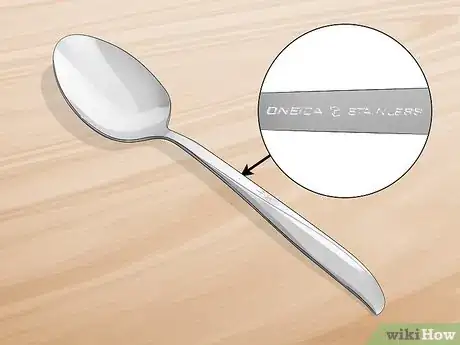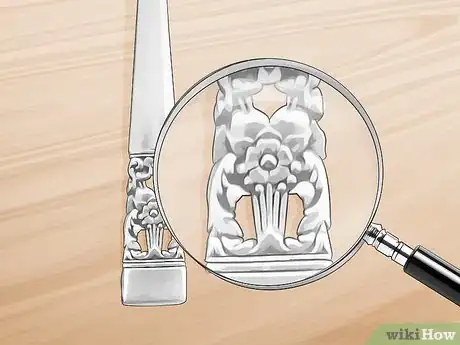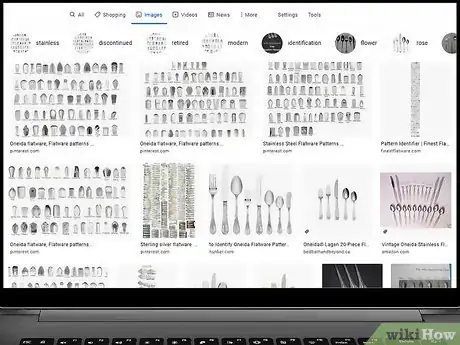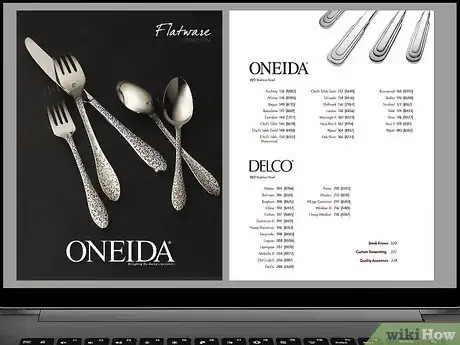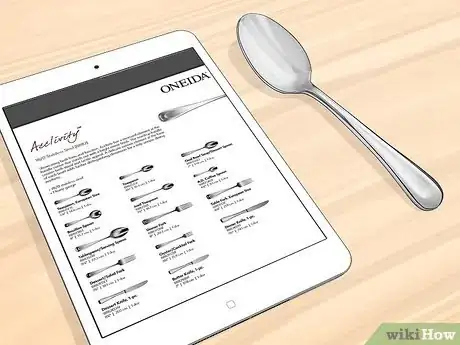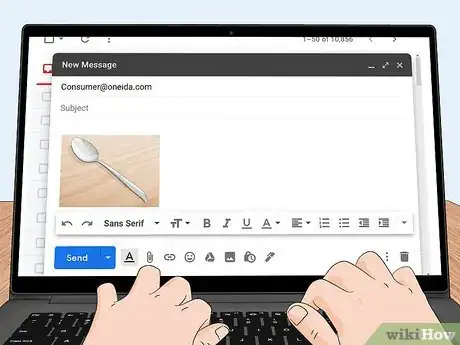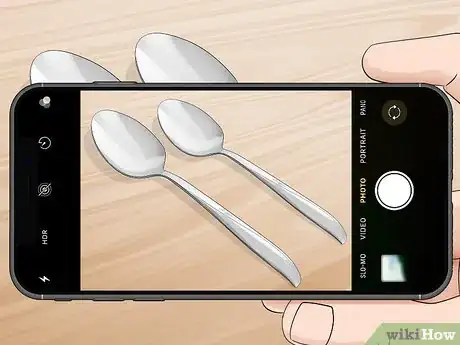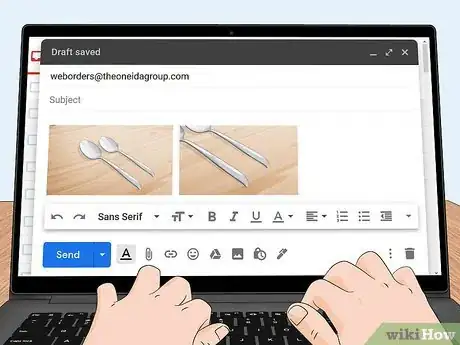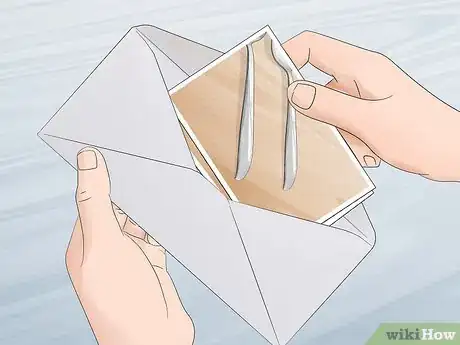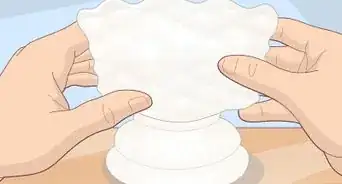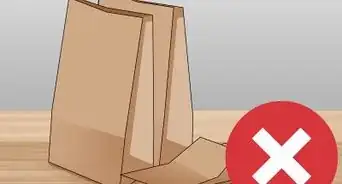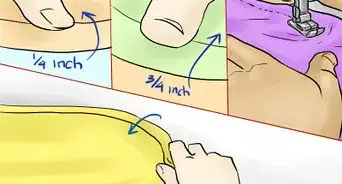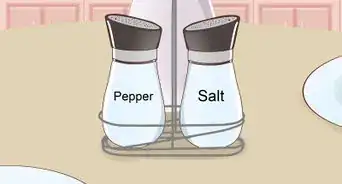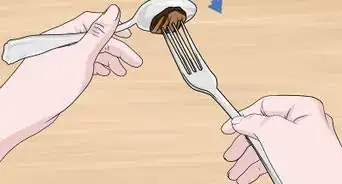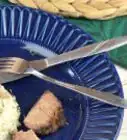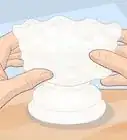This article was co-authored by wikiHow staff writer, Janice Tieperman. Janice is a professional and creative writer who has worked at wikiHow since 2019. With both a B.A. and M.A. in English from East Stroudsburg University, she has a passion for writing a wide variety of content for anyone and everyone. In her free time, you can find her working on a new crochet pattern, listening to true crime podcasts, or tackling a new creative writing project.
This article has been viewed 75,732 times.
Learn more...
If you’re looking to identify or replace a utensil in your Oneida flatware collection, it can help to have the flatware pattern on hand. If you have some time to spare, examine your flatware and compare it to pictures on a replacement website. If you’d prefer to contact Oneida directly, take several well-lit, high-quality photos of your flatware and send them to the company. Within a few weeks, you can have a better idea of the flatware you have!
Steps
Searching for Patterns Online
-
1Examine the back of your silverware for any unique words. Hold a magnifying glass to base of your flatware and look for any special words or abbreviations. Specifically, see if “Oneida” is printed on your utensil, along with a specific pattern name. Jot down any information that you find engraved on the flatware in case you do any further research.
- The abbreviation “SS” stands for “stainless steel.”
- You may notice certain numbers or fractions printed on your utensils, like 18/10 or 18/0. These numbers tell you the chromium/nickel ratio of your flatware. Utensils with a higher nickel content are less likely to look rusted or tarnished.[1]
-
2Study the pattern or stamp on the end of your flatware. Examine the bottom end of your utensils to find for any unique patterns, stamps or engravings. If your utensil is more minimalistic, you might notice a curved or straight edge along the base. If your flatware is more ornate, you might notice floral vines, curves, divots, or other unique engravings along the base. Jot down or take a mental note of any distinguishing features so you can have the information on hand. [2]
- Oneida has hundreds of different flatware patterns, so it helps to have a thorough understanding of your utensil’s design.
- For instance, the Arktos and Andorra flatware patterns look very similar, as they both have a sleek rectangular base with no engravings. However, the Andorra pattern has a tapered tip, while the Arktos pattern does not.
Advertisement -
3Use a search engine to look up specific patterns. If you have a general idea of what kind of flatware pattern you have, use a search engine to find images of different Oneida designs. Compare the search results of a specific pattern to your own utensil to see if you found a match![3]
- Chromium and nickel are 2 major components in stainless steel flatware. Nickel helps to create long-lasting, shiny flatware; in higher amounts, it keeps utensils looking shiny and in great working condition.
- Many of Oneida’s flatware products are made with 18/10 stainless steel, while their more budget-friendly items are made with 18/0 ratio.
-
4Read through a recent Oneida catalog if your flatware is new. Check online to find a digital copy of Oneida’s latest flatware catalog. Keep the design attributes of your own flatware in mind as you scan the magazine and compare the pictures to your own utensil. If your silverware was made recently, you might be able to find it in the catalog.
-
5Compare your flatware to the pictures on a replacement database. Search online to find a well-established utensil replacement site, like Finest Flatware or Flatware Finder. Try to use a website that has reference photos of various utensil patterns and engravings available, so you can compare your own flatware directly. Keep in mind that Oneida has hundreds of different products, so the comparison process might take awhile.[4]
- If you know what collection or “division” your flatware is a part of, you might be able to narrow down your search. For instance, Wedgwood and Saint Andrea are 2 possible collections you could look into.
-
6Send a picture to a replacement company if you can’t identify the pattern. Be sure to photograph the base of the utensil, so the company can clearly see the engraving, stamping or other pattern on the flatware. Use the company’s designated email to send over the pictures; additionally, be sure to include any information or label that was stamped on the back of each utensil.[5]
- For instance, if your utensil has “Oneida” printed on the back of the handle, be sure to note that in an email.
- Companies like Flatware Finder or Finest Flatware are good places to start. Locate the “Contact Us” tab on their website for more information. These companies try to reply punctually, or within several days or weeks.
Contacting the Company Directly
-
1Take several high-quality pictures of the flatware in question. Arrange your utensil in a flat, open area, where the pattern or engraving on the base is clearly visible. Photograph the silverware from several angles, so Oneida staff can clearly identify your utensil. If possible, upload these photos to a computer so you can print or email them later.
- While these photos don’t have to be professional, the details on the flatware need to be clear and distinguishable to the naked eye.
- A camera phone can work for this process.
-
2Email your request to weborders@theoneidagroup.com. Attach your photos in an email to Oneida’s digital branch. Draft a brief message that includes some basic information about the flatware, such as where and when you found or received the utensil. Additionally, mention if you need some replacements of this exact flatware for your household.[6]
- If you think you have an older flatware set or utensil, be sure to mention that in your message.
- For example, try writing something like this:
To whom it may concern,
I have an incomplete set of Oneida flatware, but am unsure of the exact pattern. The utensils have lines engraved in the base and are surrounded with an engraving of a floral vine. I’ve had this flatware for about 5 years, and need to replace a knife and fork in the collection. Enclosed are some photos for your convenience.
-
3Mail your inquiry to Oneida’s address if you don’t mind waiting. If you aren’t in a rush to identify or replace your utensils, enclose a brief note regarding your flatware as well as a picture of the item in question. In your letter, mention how long you’ve had the flatware along with a brief description of what the flatware looks like.
- Mail the letter to the following address:
The Oneida Group
200 S. Civic Center Drive
Suite 700
Columbus, Ohio 43215. - For instance, try writing something like this:
I need to replace a knife in my flatware collection, but I can’t identify the pattern. The utensil is rectangular and has lines engraved around the edges.
- Mail the letter to the following address:
-
4Wait 2 weeks to hear back from the company. Don’t be alarmed if you don’t hear back from Oneida right away. If you don’t hear back from the company with an answer after 2 weeks, try following up with a call.
- Oneida can be reached from 8 AM to 5 PM EST on weekdays. If you live in the US, you can reach them at 1-888-263-7195. If you live in Canada, contact them via 1-800-341-3332.
References
- ↑ https://www.epicurious.com/expert-advice/how-much-to-spend-on-stainless-steel-flatware-article
- ↑ https://finestflatware.com/pages/pattern-identifier
- ↑ https://flatwarefinder.com/catalog/Oneida
- ↑ https://finestflatware.com/pages/pattern-identifier
- ↑ https://finestflatware.com/pages/pattern-identifier
- ↑ https://www.oneida.com/contact-us
